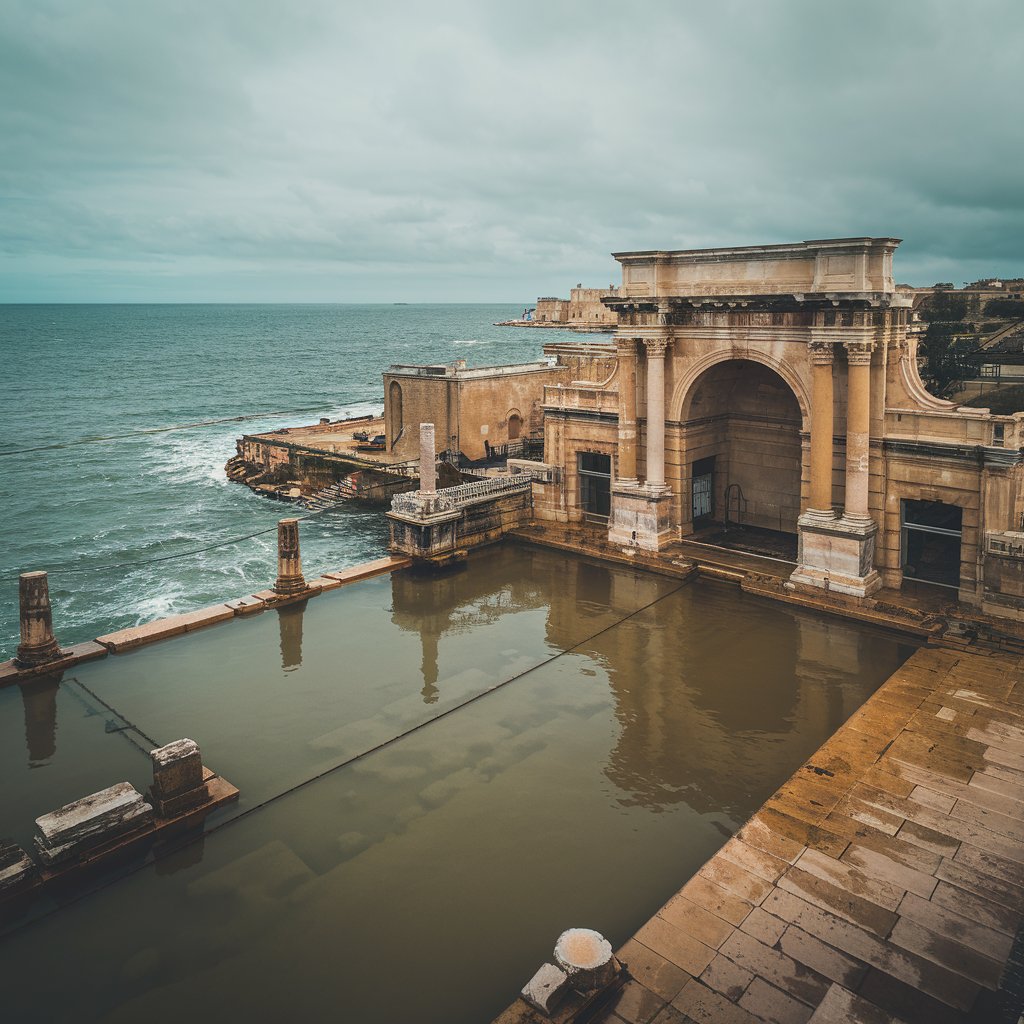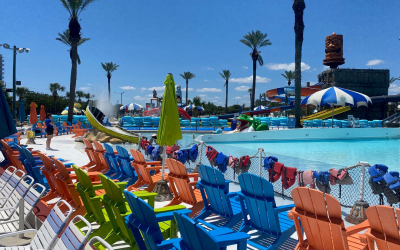Secrets of Roman Tidal Baths in Malta

With a rich history inspired by many civilizations, especially the Romans, Malta is an island republic in the Mediterranean Sea. The Roman Tidal Baths in Malta stand out among the many other archaeological sites on the islands as outstanding illustrations of prehistoric social life and engineering. In addition to showcasing the Romans’ sophisticated building methods, these baths provide a glimpse into their everyday lives. Let’s explore the Secrets of Roman Tidal Baths in Malta through this blog.
History of Roman Tidal Baths in Malta
For many ancient societies, especially the Romans, Malta was a sought-after treasure because of its Mediterranean strategic location. Under Roman control, the island flourished between 218 BC and AD 395 leaving behind amazing buildings like aqueducts, villas, and—most famously—tidal baths.
These baths were not only places for hygiene but also served as social gathering spots where Romans could unwind, debate politics, and enjoy the healing properties of seawater. Unlike conventional Roman baths, which used artificial heating, the Romans cleverly built tidal baths in Malta to harness the natural ebb and flow of the tides. By doing so, they showcased their ingenuity and demonstrated their skill in integrating natural resources into everyday life.
How Roman Tidal Baths Functioned
Malta’s tidal baths were simpler than the great thermae of Rome, but they were nonetheless novel. Included in the design were:
- Carved Rock Pools– The Romans carved tiny ponds straight into the limestone bedding.
- Natural Water Circulation– Channels let seawater clean the pools with every tide, therefore maintaining their freshness.
- Seawater Heating– Sun-warmed rock removed the need for hypocaust systems by keeping the water at a reasonable temperature.
- Strategic Locations– The baths were placed in coastal regions where tides might naturally replenish and purify them.
Notable Roman Tidal Baths in Malta
St. George’s Bay Roman Baths
Among the most remarkably well-preserved specimens are these baths at Birżebbuġa. Their complex design and water channels expose sophisticated Roman hydro-engineering.
Salina Bay Bathing Complex
Given its proximity to the old Roman salt pans, this site is thought to have served both religious and recreational needs.
Mellieħa Tidal Pools
Nestled on the northern coast, these baths were probably used by Roman nobility because of their remote position.
Read More : Anguilla Island Caribbean: The Ultimate Guide to a Serene Paradise
The Impact of Sea Level Changes on Roman Tidal Baths
The way rising sea levels impact these ancient monuments raises one of the most urgent issues for conservationists and archaeologists. The Mediterranean has seen swings over the past 2,000 years that still endanger Malta’s coastal legacy.
Past Sea Level Changes
Sea levels in the Roman era were below those of today. This means the baths were positioned best to catch tidal waves without being underwater.
Current Sea Level Rise
- Erosion of Structures–Rising rivers have partially flooded or eroded many rock-cut baths.
- Loss of Accessibility– Some pools that were once at the perfect depth for swimming are now either unreachable or overly deep.
- Increased Salinity Impact– Changing water chemistry might hasten the degradation of limestone buildings.
Predicted Future Risks
By 2100, scientists predict the Mediterranean will rise by up to 1 meter, completely submerging certain Roman tidal baths. As a result, efforts for conservation have to fit this reality.
Roman Engineering and Its Influence on Modern Bathing
Particularly in Europe and the Middle East, the Roman approach to tidal baths shaped later spa cultures. These old designs help us to understand the idea of thalassotherapy—the use of seawater for medicinal purposes.
Modern spa resorts in Malta still feature seawater pools, thus not only reflecting Roman customs but also simultaneously combining historical knowledge with modern leisure activities.
Conservation Efforts for Roman Tidal Baths
Maintaining Malta sea level’s Roman tidal baths calls for a multifarious strategy:
- Archaeological Documentation–Before more damage results, experts are digitally preserving these sites via 3D scanning.
- Protective Barriers–Manmade barriers or natural rock structures shelter certain areas from the slow wave impact.
- Public Awareness–Initiatives involving educational programs and heritage tourism underline the significance of these historical sites.
Roman Tidal Baths and Cultural Tourism in Malta
History buffs find special appeal in the baths, which attract guests from all around the globe. Guided trips allow visitors to discover Malta’s Roman past, historic bathing customs, and growing threat of sea level rise.
See Also: Utopia Guide Long Island: Ultimate Travel Guide
Conclusion
Secrets of Roman Tidal Baths in Malta show an amazing junction of environmental science, engineering, and history. Moreover, these once-centers of leisure and wellness now contend with the constant push of rising waters. Therefore, understanding their value and acting to protect them will help us to guarantee that future generations continue to appreciate these hidden treasures of Roman creativity.
Frequently Asked Questions
Are Roman tidal baths in Malta still functional?
Though they are not in use now, they are nonetheless important archeological sites.
Why did the Romans prefer tidal baths in Malta?
Without synthetic heating, the natural tide cycles provide a sustainable means of preserving clean, fresh bathing water.
How many Roman tidal baths are there in Malta?
Although researchers have verified several sites, more discoveries are coming to light.
What materials were used to build these baths?
They fashioned them on Malta’s limestone coast, mostly using natural rock formations.
Can tourists visit Roman tidal baths in Malta?
Indeed, a lot of locations are reachable, however others are under protection for environmental issues.
How does climate change threaten these baths?
Rising sea levels and coastal erosion run these ancient buildings under danger of submersion and damage











